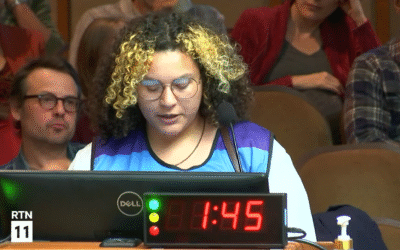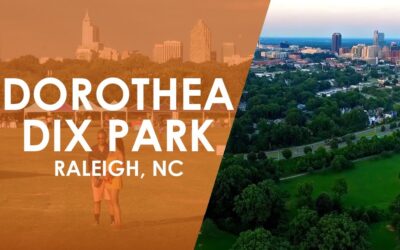Highlights of November 18, 2025 Work Session and Afternoon Session
Raleigh’s Christmas Parade – Let the Children Participate!
I plead for your assistance in preserving one of Raleigh’s greatest cultural events—the Raleigh Christmas Parade. Christmas and Christmas Parades are for CHILDREN. I sat next to Hailey Brooks’ father in 2022 as he pleaded that you not eliminate the parade following his daughter’s tragic death. I am here to ask you to reconsider the banning of participation by the under-8 set unless they are on a vehicle. By doing so, you have effectively closed the opportunity to many children who don’t have a ride.
LET THE CHILDREN participate.
Council showed a complete lack of interest for residents’ concerns
It was hard to process the complete lack of interest or support by this City Council for the concerns repeatedly raised by residents. Countless emails, phone calls, meetings, and petitions were met with silence. Council was misled—partly by a Planning Department analysis that failed to identify any policy inconsistencies, and partly by Council member Silver’s one-sided defense that dismissed legitimate concerns raised by residents.
When and How does Raleigh Vote? – Event Rescheduled
The next election for Raleigh Mayor and City Council will be held November 3, 2026. But there’s a brand-new primary election first, on March 3, 2026. With a deadline for candidates to file and get on the ballot THIS YEAR — by December 19, 2025. Join Livable Raleigh Advisory Committee Members and our guest Elections Expert Gerry Cohen on Wednesday, January 7, at 7pm for a ZOOM meeting to learn all the details.
Glenwood South neighborhoods are simply not safe
Glenwood South and surrounding neighborhoods are simply not safe. We unfortunately have to live with what former city leaders created and you have allowed to fester. The sad, shameful truth of it all and everyone knows it is that if any of you lived in the area and had to live with this ‘vibrancy’ it would have ended years ago.
November 12 Public Comments
The Work Session was cancelled. The Evening Public Comments Session focused on the Big Branch Greenway Connector, rezoning, preservation, and Glenwood South. 17 of 26 people who had signed up to speak followed through.
The City is falling behind in infrastructure support
The City does have a plan to support that growth. It is called a Comprehensive Plan. Does the City follow that plan when adding density? Most times, the answer is no!
Healthcare Facilities Need Protection from Noise
I’m here out of concern for what the proposed changes to the current noise ordinance could mean for our patients—people who are already facing enough challenges by the time they arrive at our facility. I urge each of you to visit our facility and witness these transgressions for yourselves. Step into our patients’ shoes—hear what they hear—and experience what it’s like for them to seek care under those conditions. These changes are not about limiting free speech—they are about protecting the health, dignity, and safety of everyone in our community.
The ‘symbolic ownership’ brought by condos will destroy DIX Park
There is a movement advocated by some rich and powerful people which is very ill-advised. Some people want to put condominiums in Dix Park. The concept of ‘symbolic ownership’ is the reality of people feeling that they own something even if in fact they are only located nearby. This is certainly what will happen if folks are able to purchase condominiums in Dix Park. They will ‘symbolically own’ a portion of the park and will be offended when normal citizens, who just want to enjoy the open space, invade ‘their’ park.
All residents’ voices MUST be heard.
The current proposal to eliminate boards — or to merge multiple community-focused efforts into a single entity — is deeply disappointing. As a volunteer commission, the HRC is not structured to provide adequate attention and voice to the wide range of community issues.









